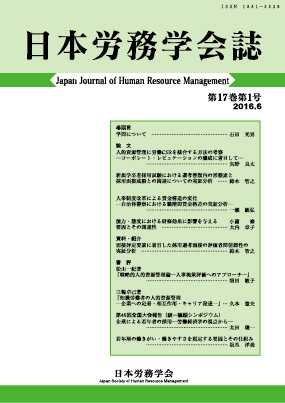Also in modern society, the importance of a public sector just increases. Therefore, how suitable talented people are appropriately secured for bearing this is an important subject which may also influence the whereabouts of the country. And it is one of the personnel policies which bear a decisive role in it into what kind of thing the wages of the public sector are made.
The purposes of this paper are to clarify the actual condition of the wage level of the public sector in Japan, and to show future directivity. For this purpose, the gap of the wage level of a public sector and a private sector was metrically estimated using objective data. The actual condition of the wage level was clarified by this analysis. Next, the gap between the areas of the wage level of a public sector was estimated. And the factor which is producing the gap was analyzed. By this analysis, the economic mechanism which has determined the wage level of a public sector substantially was clarified.
As a result of estimation, although the public sector exceeded the private sector by comparison by average wages, the tendency for a public sector to be less than a private sector was found in comparison which controlled attributes, such as age, the length of service, and a size of business. However, the tendency for the level of an official-business section to go up relatively was found in recent years.
Moreover, the wages of the public sector are influenced by financial power (place expressed with an index of financial condition). Furthermore, it is influenced by the country, residents, a labor union, etc. Being determined in response to these influences became clear. However, an index of financial condition is greatly dependent on the structure of a tax etc., it is decided that it will be it, and the productivity of the laborers of a public sector does not reflect it directly. Therefore, it lacks economic rationality that the wage level of a public sector is dependent on an index of financial condition, and it cannot consider it to be a suitable thing easily.
If based on the above result, it is appropriate for the wage level of the public-sector that balance should be taken with the laborers (those to whom attributes, such as the quality of labor and productivity, were similar) who are performing business of the same kind by the private-sector, in order to obtain an understanding of many residents, and secure the talented people in the public-sector. It is thought important that the present system which aims at balance of the public-sector and the private-sector is employed according to the main object, and is established as a steadfast thing which was generally widely released in the intelligible form and was supported with the opened objective data.
View full abstract
